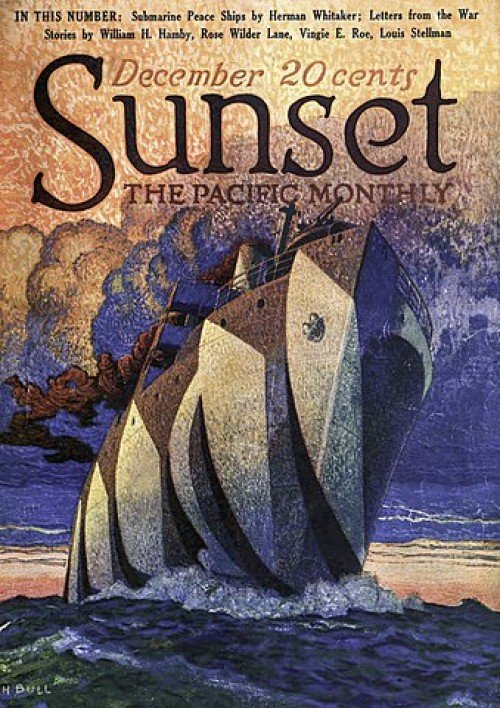
Introduction:
In the realm of literary magazines, The Pacific Monthly stands tall as a timeless treasure trove of rich Western heritage. Born in the early 20th century, this publication played a pivotal role in shaping the cultural landscape of the American West. Through its insightful articles, poignant stories, and captivating poetry, The Pacific Monthly captured the essence of the region, celebrating its landscapes, communities, and unique spirit. In this blog post, we will embark on a journey to discover the legacy of The Pacific Monthly and its profound impact on Western literature and culture.
A Literary Beacon of the West:
The Pacific Monthly emerged in 1907 as a beacon for literary expression in the Western United States. It provided a platform for talented writers, poets, and intellectuals to showcase their work and share their perspectives on the region. Its pages were filled with thought-provoking essays, evocative stories, and stirring poetry, all deeply rooted in the spirit of the West.
The Pacific Monthly stood as a literary beacon of the West during its time of publication. The magazine played a crucial role in shaping the literary landscape of the region and becoming a platform for Western voices to be heard. Here are some key aspects that made The Pacific Monthly a literary beacon of the West:
-
Regional Identity and Representation: The Pacific Monthly embraced and celebrated the distinct regional identity of the American West. Through its pages, the magazine sought to capture the essence of the West, showcasing its landscapes, communities, and cultural heritage. It gave a voice to Western writers and artists, providing them with a platform to explore and express the unique qualities of the region.
-
Exploration of Western Landscapes: The magazine's pages were filled with vivid descriptions and evocative imagery that brought the Western landscapes to life. From the rugged mountains to the vast prairies, the magazine documented the awe-inspiring beauty of the West. It allowed readers to immerse themselves in the majesty of the region, creating a sense of connection and appreciation for its natural wonders.
-
Stories of Western Life and Adventure: The Pacific Monthly featured stories that reflected the spirit of adventure and resilience that characterized life in the West. Whether it was tales of pioneering settlers, explorers, or cowboys, the magazine presented narratives that captivated readers and offered a glimpse into the challenges and triumphs of Western life. These stories not only entertained but also helped to shape the collective identity of the West.
-
Promotion of Western Literature and Writers: The magazine actively promoted Western literature and provided a platform for emerging writers to showcase their work. It published the works of established authors and also encouraged aspiring writers to contribute. This support and recognition of Western literary talent helped nurture a vibrant literary community in the region and encouraged the growth of Western literature as a whole.
-
Influence on Western Literary Tradition: The Pacific Monthly's influence on Western literature cannot be overstated. The magazine played a pivotal role in establishing a distinct literary tradition that reflected the Western experience. It inspired subsequent generations of writers who continued to explore and contribute to the genre of Western literature, leaving an indelible mark on the literary landscape of the West.
The Pacific Monthly served as a literary beacon of the West, capturing the spirit, landscapes, and stories of the region. Its commitment to representing Western voices, promoting Western literature, and celebrating the unique qualities of the West made it a significant contributor to the development and recognition of Western literature. Its legacy continues to inspire and shape the literary heritage of the American West to this day.
Celebrating Western Landscapes:
One of the notable features of The Pacific Monthly was its unwavering dedication to capturing the breathtaking landscapes of the West. From the majestic peaks of the Rocky Mountains to the vast deserts of Arizona, the magazine showcased the beauty and grandeur of the region through vivid descriptions and stunning imagery. It allowed readers to embark on virtual journeys, immersing themselves in the natural wonders that defined the West.
Documenting Western Communities:
The Pacific Monthly served as a testament to the rich tapestry of Western communities. It provided a platform for regional voices, sharing stories that depicted the struggles, triumphs, and aspirations of the people who called the West their home. Whether it was tales of pioneering settlers, Native American legends, or stories of resilience during challenging times, the magazine celebrated the diverse heritage and spirit of the West's inhabitants.
Influential Contributors:
The Pacific Monthly attracted some of the most influential writers and thinkers of its time. Renowned authors such as John Muir, Zane Grey, and Jack London graced its pages, sharing their profound observations and captivating narratives. The magazine also nurtured emerging talents, offering them a chance to make their mark in the literary world. The contributions of these writers not only elevated the magazine's status but also left an indelible mark on Western literature.
Legacy and Impact:
Although The Pacific Monthly ceased publication in 1911, its impact on Western literature and culture endured. The magazine provided a platform for Western writers to express their unique perspectives and helped establish a distinct literary identity for the region. Its influence can still be felt in contemporary Western literature, where writers continue to draw inspiration from the landscapes, communities, and stories that were once brought to life within its pages.
Conclusion:
The Pacific Monthly holds a special place in the annals of Western literature. Through its pages, it illuminated the landscapes, communities, and spirit of the American West, leaving an enduring legacy that continues to resonate with readers and writers alike. As we reflect on this remarkable publication, we are reminded of its invaluable contribution to the literary heritage of the West and its ability to inspire generations of storytellers to cherish and celebrate the essence of this remarkable region.








